Key takeaways
- Understanding UFO sightings involves recognizing the influence of perspective, environment, and expectation on perception.
- Effective documentation requires utilizing multiple tools like notebooks, cameras, and apps to capture comprehensive details beyond visuals.
- Preparing mentally and physically for a sighting, including scouting locations and checking equipment, enhances the likelihood of meaningful observations.
- Sharing evidence with a community and presenting it thoughtfully can amplify insights and foster collaborative exploration of the phenomenon.
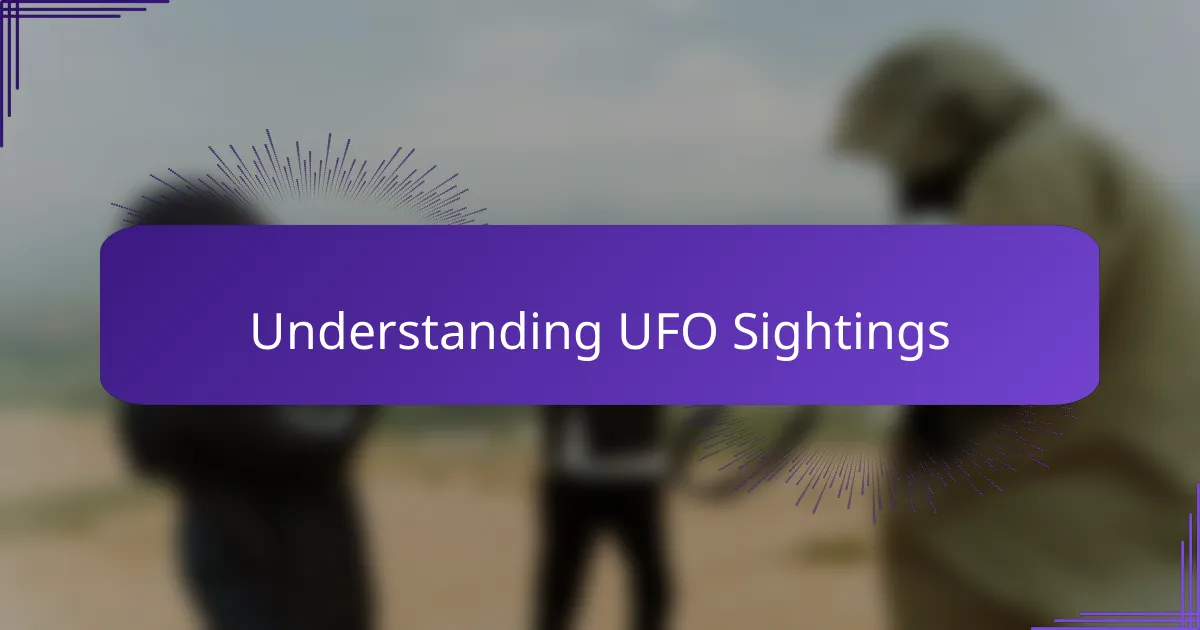
Understanding UFO Sightings
When I first encountered a UFO, I struggled to make sense of what I was seeing. UFO sightings often leave us questioning reality—are these crafts from another world or misidentified natural phenomena? I’ve found that understanding the psychology behind these experiences helps me stay open-minded without jumping to conclusions.
Have you ever wondered why some people see lights darting across the sky while others see nothing at all? From my experience, factors like perspective, environment, and even expectation play huge roles in shaping what we perceive. It’s fascinating how the same event can spark awe in one person and skepticism in another.
In trying to document a UFO sighting, I realized how important it is to capture details beyond just the visual. Noting sounds, timing, and emotions gives a fuller picture that goes beyond a blurry photo or shaky video. This deeper approach not only grounds the experience but also connects us to the mystery in a more meaningful way.
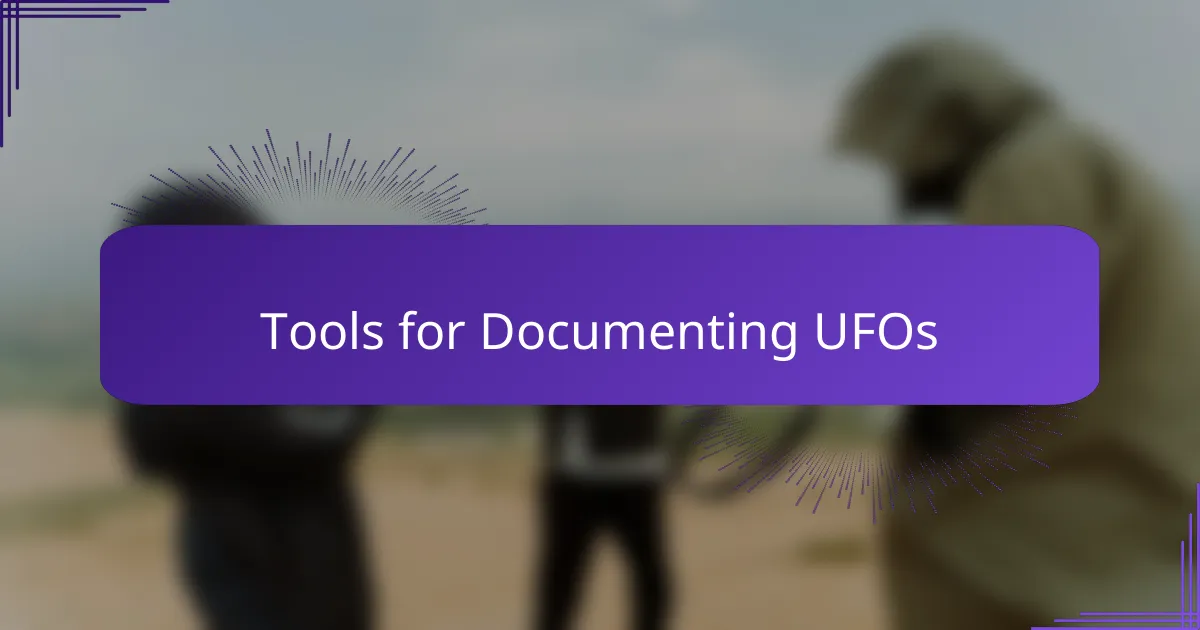
Tools for Documenting UFOs
When I first tried to document a UFO, my smartphone was my go-to tool because it was always within reach. But I quickly learned that relying solely on a phone camera can be frustrating—low light and sudden movements often result in blurry images. That’s when I realized having a compact digital camera with good zoom and image stabilization can make a big difference.
I also found that keeping a notebook or a voice recorder handy is invaluable. Why? Because no matter how sharp your photos are, capturing your immediate thoughts, the exact time, and even ambient sounds adds layers to your documentation. I remember jotting down shaky details after my sighting, and those notes later helped me piece together what I experienced with much more clarity.
Ever thought about the power of combining different tools? Using apps that track celestial events alongside your recordings can help rule out common explanations like planes or satellites. From my experience, this multi-tool approach transforms simple documentation into a more credible and insightful investigation.
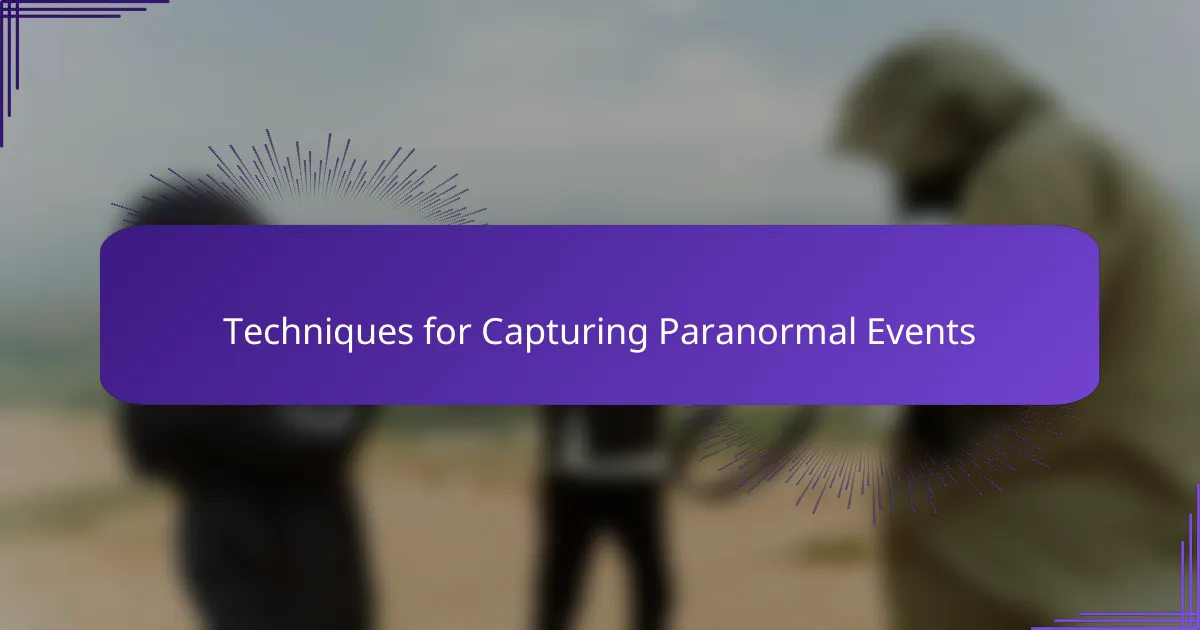
Techniques for Capturing Paranormal Events
Capturing paranormal events often feels like trying to hold onto something just out of reach. I’ve learned that patience is key—sometimes waiting silently with your equipment, ready but relaxed, makes all the difference when that unexplained moment finally appears. Have you ever noticed how the tension in the air changes just before something unusual happens? Being attuned to those subtle shifts helps me anticipate the right moment to start recording.
One technique I swear by is filming in low-light settings with manual control over exposure and focus. It’s tricky, but adjusting these settings lets me enhance faint glows or movements that automatic cameras often miss. I remember my first successful attempt—after fiddling with those controls, I caught a flicker of light that vanished too quickly for the [censured] eye. That instant felt electrifying, like I’d peeled back a small layer of mystery.
Another approach that changed my perspective comes from using multiple recording devices simultaneously. I set up a camera for video, a digital voice recorder for ambient sounds, and even an EMF (electromagnetic field) meter to detect anomalies. It sounds over-the-top, but having these layers of evidence makes revisiting the experience much richer. Don’t you find it fascinating how combining sense data can sometimes tell a story no single device could capture alone?
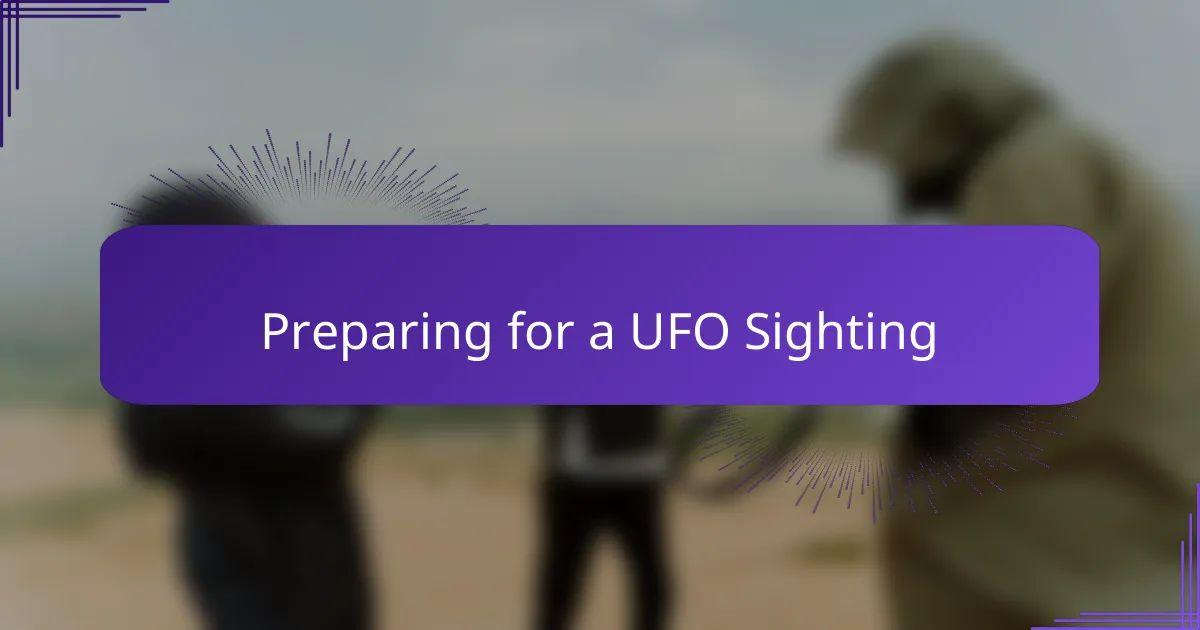
Preparing for a UFO Sighting
Preparing for a UFO sighting is as much about mindset as it is about gear. I’ve noticed that calming my mind and setting clear intentions helps me stay alert without getting overwhelmed by excitement or fear. Have you ever tried to stay patient in a moment charged with anticipation? It’s not easy, but that mental preparation often makes the difference between a haphazard snapshot and a meaningful observation.
Another crucial step for me has been scouting the location beforehand. Choosing a spot away from city lights where the sky is clear transforms the whole experience. I still remember one chilly night when, after hours of waiting, the quiet stillness finally paid off with an unexpected flicker—without that careful preparation, I might have missed it entirely.
Lastly, I always double-check my equipment and pack backups. I learned this the hard way when my camera battery died mid-sighting—an emotional rollercoaster that taught me to be ready for anything. Do you pack extra batteries, flashlights, or even warm clothes? These small details create the comfort and confidence you need to stay focused when that eerie moment arrives.
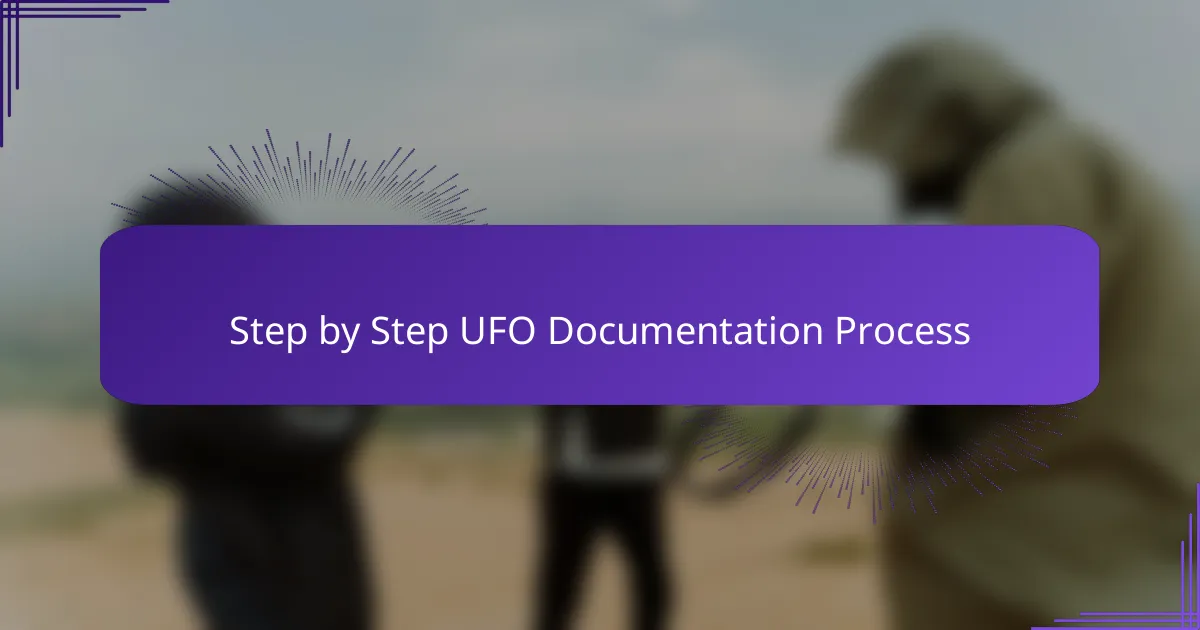
Step by Step UFO Documentation Process
The very first thing I do when documenting a UFO sighting is to remain as calm and focused as possible. It’s tempting to rush, grab your phone, and start filming right away, but I’ve found that taking a few deep breaths and quickly noting the exact time and location sets a solid foundation. Have you ever noticed how moments of excitement can scatter your attention? Staying grounded means capturing clearer details instead of frantic, unreliable footage.
Next, I move into a systematic observation phase — watching the object’s movement, shape, and any changes in color or light intensity. I’ve learned to describe what I see in real time, speaking aloud or jotting quick notes. For example, during one sighting, I noticed the object pulsing with a blue glow before vanishing suddenly, and recording that detail immediately made later analysis so much richer.
Finally, cross-referencing comes into play, and this is where the nitty-gritty of documentation shines. I sync my time-stamped photos and audio recordings with any known flight paths or celestial events using apps. It might sound technical, but I promise it grounds the experience in reality, helping separate the explainable from the truly mysterious. Have you tried layering facts like this? It turned what felt like chaos in my head into a clear, credible account I could revisit with confidence.
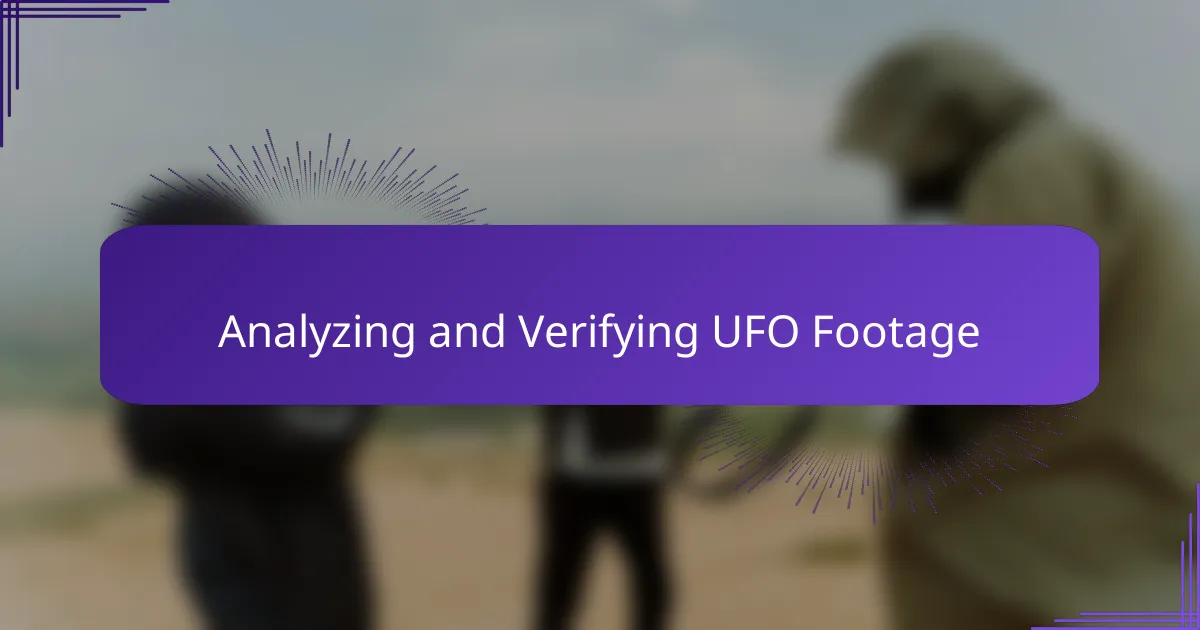
Analyzing and Verifying UFO Footage
Verifying UFO footage is a delicate dance between skepticism and open-mindedness. When I review my videos, I always zoom in to check for pixelation or inconsistencies that might hint at digital manipulation. Have you ever noticed how shadows or reflections can create illusions? That’s why paying attention to lighting angles and surroundings is crucial—it helped me rule out a drone once when the shadows didn’t match the supposed object’s shape.
Another step I never skip is cross-referencing my footage with known aviation or astronomical events. It surprised me how often satellites or weather balloons mimic UFO behavior. I remember one night when I excitedly recorded a flickering light, only to find it was part of the International Space Station’s trajectory thanks to an app. That moment taught me the value of thorough verification before jumping to extraordinary conclusions.
Finally, I’ve found that sharing footage with a community of enthusiasts brings fresh perspectives. Sometimes they spot details I’d missed, like background noises or frame anomalies. Isn’t it fascinating how collaborating turns solitary investigation into a richer, more reliable discovery? From my experience, this peer review feels like a safety net against confirmation bias, helping me tell the difference between genuine mystery and common misinterpretation.
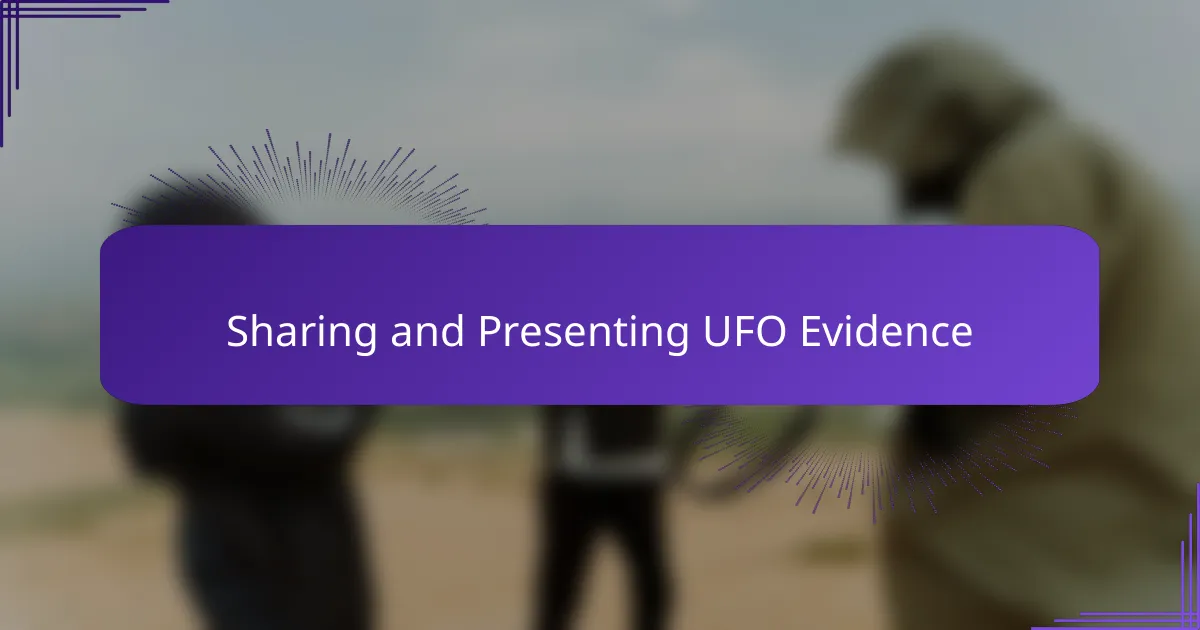
Sharing and Presenting UFO Evidence
When it came time to share my UFO evidence, I quickly learned that presentation matters just as much as what you’ve captured. Have you ever noticed how a shaky video without context can leave people more doubtful than curious? So, I started telling the story behind each photo and clip—where I was, what I felt, and how the object behaved—which seemed to spark more genuine interest and open-minded questions.
I also discovered that organizing my evidence chronologically helps others follow the sequence of events and increases credibility. For example, laying out timestamps alongside my notes and audio recordings turned a jumble of moments into a compelling narrative. It reminded me how much clearer the mystery becomes when you don’t just dump raw footage but guide people through the experience step-by-step.
Lastly, I found that sharing with a community passionate about paranormal phenomena brought unexpected benefits. Getting feedback and new interpretations not only enriched my understanding but made me feel less alone in this vast unknown. Have you tried opening up your sighting to a like-minded group? From my experience, that exchange transforms isolated curiosity into collective exploration.